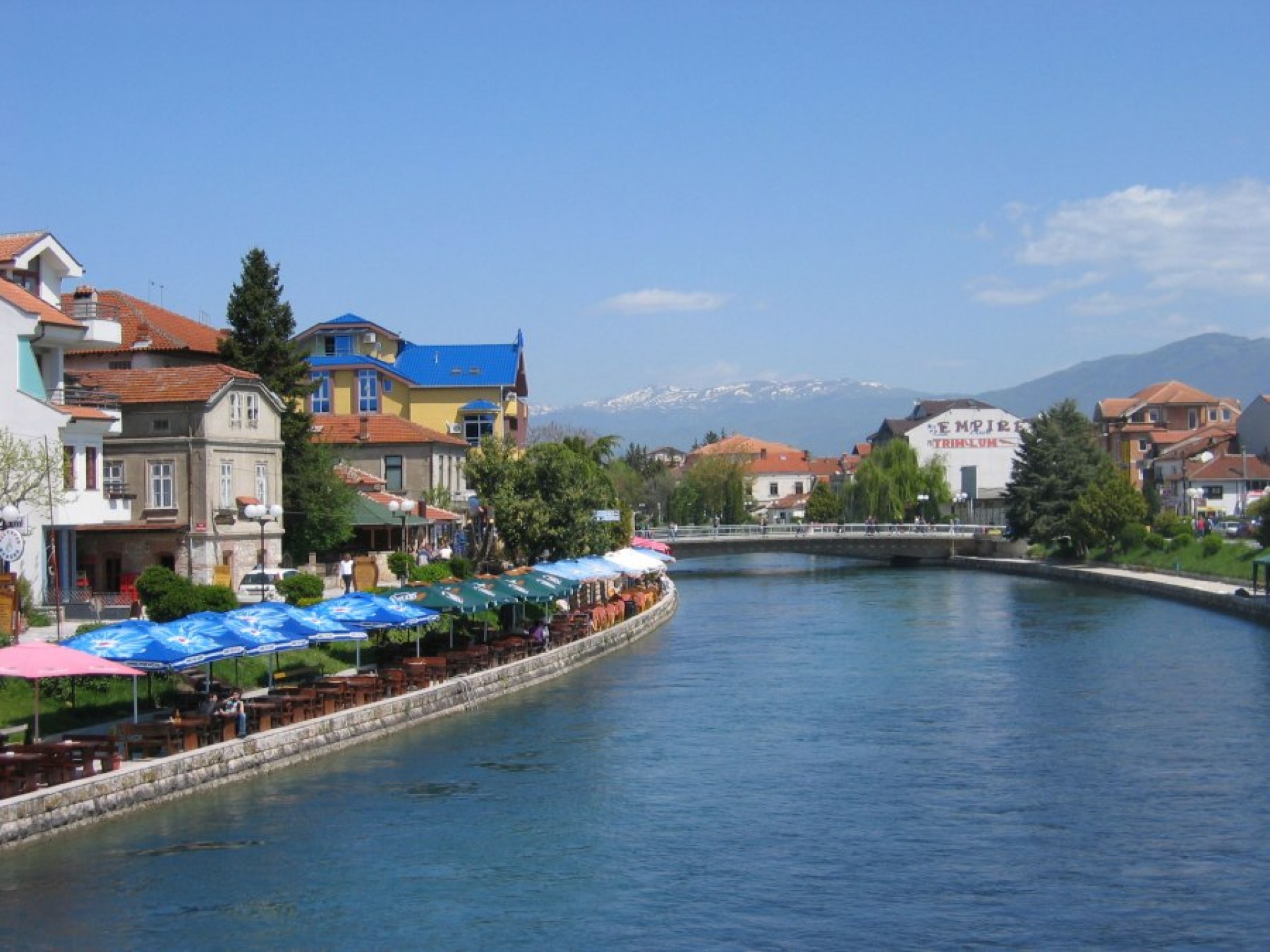Struga, a city in the southwestern part of the Republic of Macedonia and the administrative center of the municipality of the same name. The city of Struga lies in the plain of the Struga Field on both banks of the river Crn Drim and on the northern shore of Lake Ohrid. It has 16,559 inhabitants (2002) and is located 171 km southwest of the capital Skopje.

What is the origine of the city name Struga ?!
Struga is an old settlement that dates back to the Neolithic period. In antiquity, Struga was very profitable because it was located on the road Via Egnatia, which connected the Eastern and Western Roman Empires. Archaeological finds and excavated monuments suggest that life here dates back to prehistoric times. The first Neolithic settlement was registered around 3,000 BC. The ancient name of the city is Enhalon which means eel, and the current name Struga gets later from the Old Slavic word & bdquo; straga & ldquo; which signifies passage.
Climate
According to the geographical position of Struga, the climate, ie the temperatures, Struga has a subtropical climate, but it is influenced by its air currents and the continental climate. Rounded by mountainous areas to the west is Jablanica, to the northeast Karaorman and to the southeast Galicica, as well as the openness of the Struga Field along the valley of the river Crn Drim and Sateska to the north, caused lower annual temperatures. Maximum air temperatures in July and August can vary from 28 & deg; С & ndash; 33 & deg; С. In the summer season, ie the months of July and August, the water temperature can reach up to 26.4 ° C.
The average number of days with summer air temperature higher than 25 ° C and the surface part of the lake water than 20 ° C, is 73-78 days, with the greatest intensity in July and August. In the winter period of the year, the average monthly temperatures are above zero. In the mountainous parts above 1600 m. temperatures below 0 degrees start from December to the end of March.

